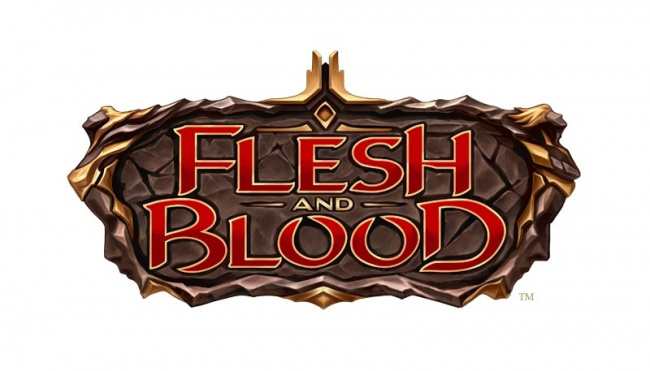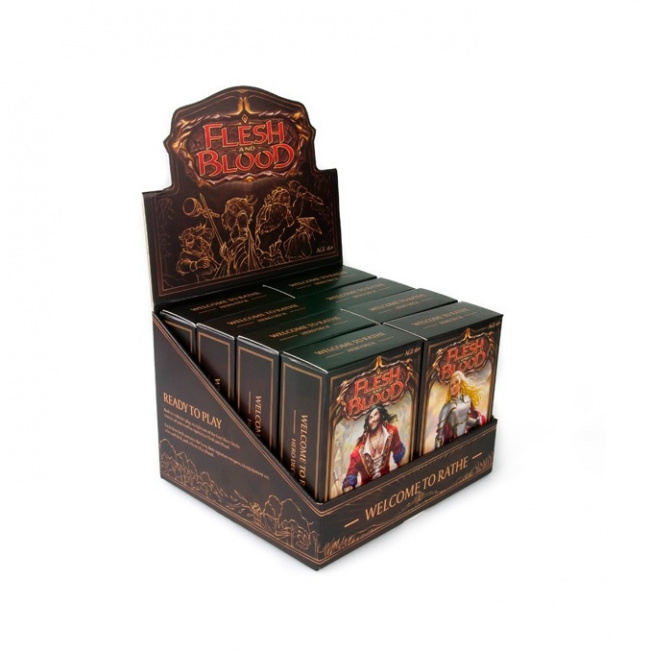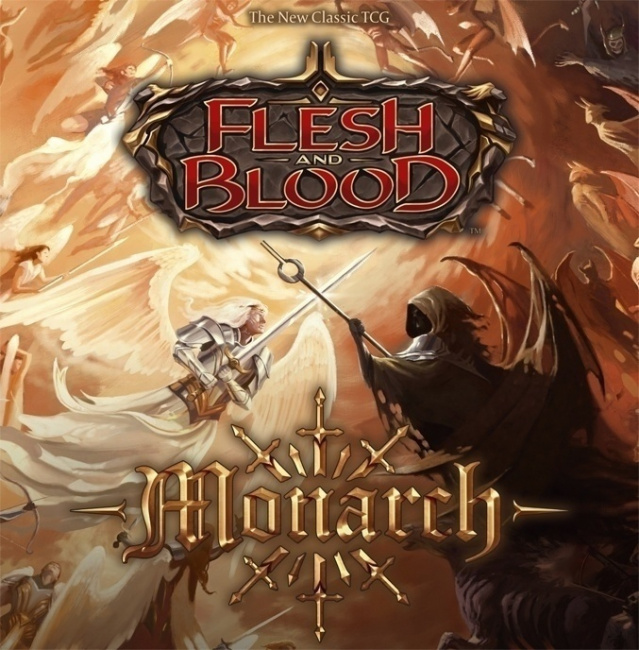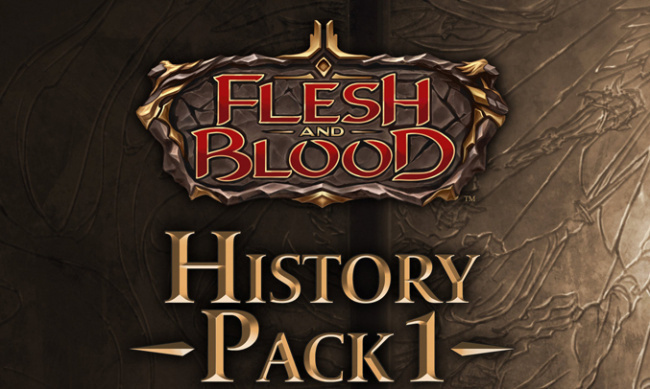A month ago, I was at Gen Con 2023, and as is often the case with Gen Con, you often find insight into the happenings of the Games Industry when you are not looking for news. So, as this particular story goes, I was doing my customary “civilian time” stroll through the card gaming hall at around 9:30 am on Saturday. I enjoy trading Magic: The Gathering cards with other players, and I walked up to someone at an open table, with trade binders in hand, and asked “You looking to trade Magic?” His response was “Yeah, but I’m looking to trade Magic Modern cards for Flesh and Blood.”
This response had me absolutely dumbfounded on some level, mostly because it had never happened to me before. However, I do talk to a lot of retailers on a regular basis, so it isn’t really that shocking. Flesh and Blood TCG has very quietly been making strides on the retail level for a few years or so now and has really come into its own since I first saw the game back in 2019. There are a number of factors behind FaB’s latest rise, but before we go into that, let’s review that tale of the tape a bit.
I first encountered Flesh and Blood TCG before most people did, back in 2019. ICv2 Editor-in-Chief Milton Griepp plopped these boxes of Welcome to Rathe in front of me, and was like “It’s a new TCG from New Zealand. Let me know what you think.” My initial reaction to receiving the boxes was typical of a battle-tested TCG player and journalist who had seen many a card game come and go in my time: “It’s probably i good game, the art looks cool, but TCGs are a hard market break into.” I brought the game back to a playgroup of veteran Magic players and had them look at it. Before we could form conclusive opinions about the game, the COVID-19 pandemic shut down the world. From that point, things got very strange with consumers spending money on TCGs (being locked in the house and all), and by the time I had assessed that the game was actually good, its collectability had already exploded n the market.
Skipping ahead to 2022, after the TCG markets seemed to come to their senses, and FaB had already been through a meteoric rise in sales from Monarch (see “May 2021“) through Tales of Aria (see “September 2021“), and a dip post-Everfest (see “February 2022“). After Everfest, the easy-money seekers (or what the Disney Lorcana fans erroneously refer to as “scalpers”) seemed to exit the scene, and FaB lost a little momentum on the collector side of things. Bravo, Star of the Show/”Starvo” also did a little damage to health of Classic Constructed play because that particular hero was overpowered. Legend Story Studios corrected a lot of these issues via their FaB 2.0 policy update (see “FaB 2.0 Product Policy“), but by that time, the easy-money seekers were already off pillaging MetaZoo and Magic: The Gathering reprint sets for quick cash.
The exit of the easy-money seekers signaled to many FOMO fans that the bloom was off the rose and it looked like FaB was off to the land of TCG obscurity. However, this was far from the truth of what was actually happening. FaB was setting up for quiet run of strong, organic growth in the TCG marketplace through 2023; actual honest to goodness, sustainable growth.
So, how did this happen?
If you analyze how non-Big Three TCGs actually grow and gain popularity in the marketplace, they all seem to go through Boom and Dip phases of growth. In the Boom phase, the TCG is usually new to the market and the enthusiasm behind the game drives prices of sealed boxes up. Somewhere in the middle of that phase, the easy-money seekers and singles sellers glom onto the game and drive prices for product up even more. Towards the end of that phase, people experiencing FOMO, who are often late to the party or people who just want to simply play the game in the long term, end up paying top dollar prices for the product or singles.
The Dip phase gets triggered when the market can’t support the prices anymore or the market gets saturated with product, for whatever reason. In the case of FaB, the dip trigger probably occurred prior to the announcement that they were no longer producing first edition and unlimited runs on boxes (see “Product Policy“). At the Dip point, the easy-money people have already left, and people holding onto singles or sealed product rush to scuttle the ship for whatever they can get. However, not all is lost at this point because the people left after the wreckage are the fans who are legitimately “strong hands” collectors and actual dedicated fans of the game. These folks have a till-death-do-us part sort of mentality about the game they had gotten into, and the cash to be made means less to them than being a part of the overall community surrounding the game.
The goal for lasting TCG companies is to emerge from the Dip phase with a sense of greater resilience and strength, then head into a phase of long term sustainability of sales or even growth. Now, most new TCG companies make the mistake of declaring “all is lost,” cutting their losses on the remaining fans, and move on the next project (if there is one), entering what could be termed a Bust phase. In the case of FaB, LSS CEO James White (see “ICv2 Interview“) actually doubled down on his player base in 2023 when other companies might’ve abandoned them, and moved FaB back into a growth phase from the Dip phase. Being a former Magic: The Gathering pro-caliber player, White knew the value of sustaining a competitive play community at high levels with significant prize support and used this to LSS’s advantage.
LSS introduced a level of Pro Play almost immediately upon the release of FaB with their The Calling series (see “‘The Calling’ Tournament Circuit“). The full launch of this series got delayed by the COVID-19 pandemic, but after the dust had settled a bit, it re-emerged with a new events partner (see “Legend Story Studios and ChannelFireball“). They ran some big tournaments in the U.S. in 2021, including The Calling Las Vegas main event, which fielded 750 players (see “‘Flesh and Blood’ The Calling Las Vegas“). Later down the road, LSS doubled down on big events even further when they offered up a $1,000,000 Pro Play Circuit (see “Pro Play 2022 Circuit“).
This is where things got interesting, because the $1,000,000 Pro Play Circuit’s launch coincided with the softening of FaB sales in 2022. However, instead of backing off in response to waning easy-money seeker enthusiasm, White and the LSS team just kept going with big prize pools for organized play, and their player base helped them power through the Dip. The FaB World Championships in 2022 boasted a $300,000 prize pool (see “‘Flesh and Blood TCG’ World Championships“), and the 2022 U.S. National Championships drew over 800 players. That was followed up with the announcement of another million-dollar Pro Play Circuit for 2023 (see “Million Dollar Pro Play 2023 Schedule“), all during the Dip phase of FaB’s TCG lifecycle.
In 2023, the strategy of building a competitive play community paid off for FaB and helped them get through a rough period of sales. However, big events were only half the story of how the game returned to a growth phase. The other half of the story was happening on the FLGS level (see Part 2).
The opinions expressed in this column are solely those of the writer, and do not necessarily reflect the views of the editorial staff of ICv2.com.
Source: ICv2






